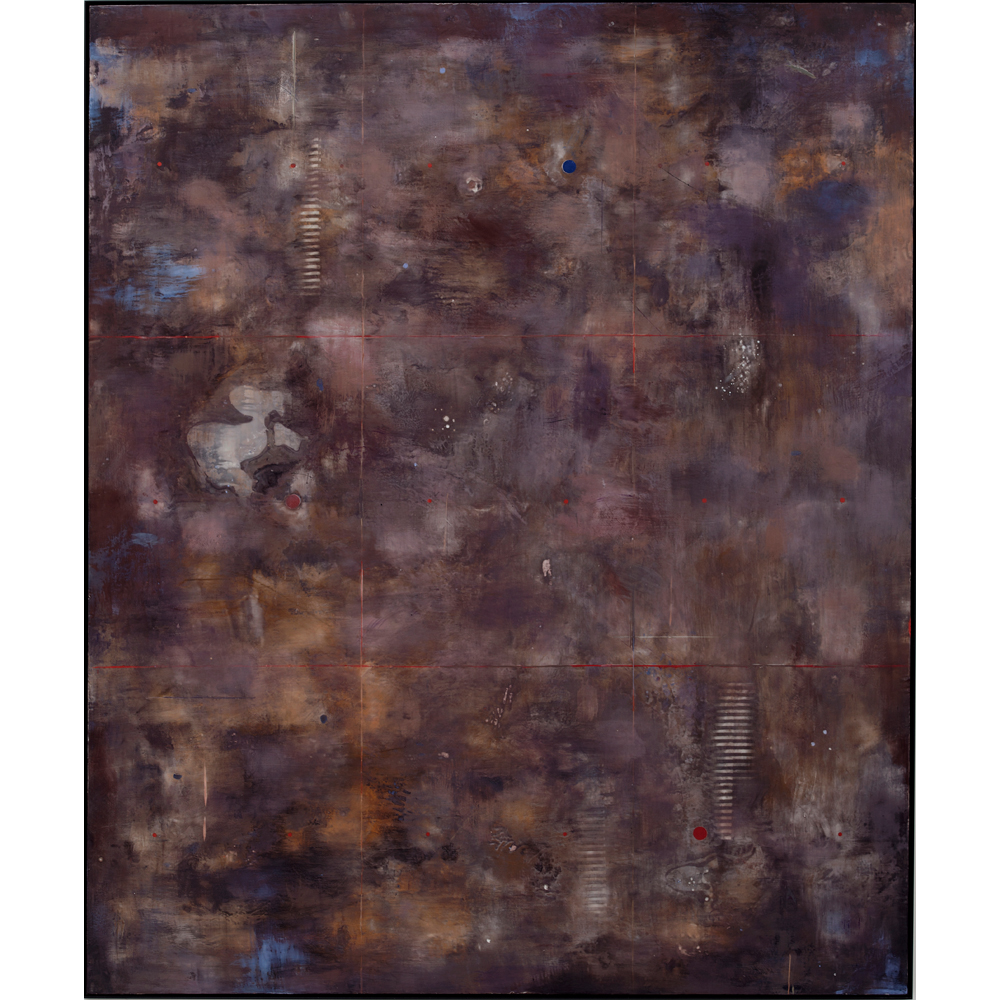Artwork Description
The Other Side of Now
Dimensions: 72.63 x 60.63″
Year: 2017
Media: encaustic on birch panel
Raphaelle Goethals’ encaustic on birch panel work, The Other Side of Now, suggests Goethals’ ability to map both the past and the present within a single work, indicating a sense of time through the title. In the same way that the piece is interpreted as visually ambiguous, viewers are left contend with the meaning of Goethals’ Other Side, which may indicate a physical space or a realm less tangible. Goethals employs a darker color scheme, but one which is not bereft of her characteristic detailing, seen in the various uses of white line and less distinguishable forms. Much like her other works in Turner Carroll’s collection, Goethals has constructed a faint red grid beneath the work, which she uses “to [anchor] us in present time.”
Raphaëlle Goethals is a self-described bicultural artist, who grew up in Belgium and left for the United States to pursue her artistic career in Los Angeles—culminating in her move to New Mexico where she has lived and produced work for the past twenty years. Due to her upbringing in an environment riddled with the artistic successes of Flemish Renaissance Artists and more contemporary individuals such as René Magritte, Goethals work often draws on this rich history, emphasizing a sense of process and creation in conjunction with art historical elements. Her work is best described as abstract, where Goethals gradually builds up detailed surfaces through layering wax and resin, incorporating elements from the present through each additional layer and the past by manipulating new layers to reveal the textures beneath. Goethals’ work redefines traditional ideas surrounding language and time and serves as a personal adaptation of a landscape, where her pieces visually explore the human mind rather than a geographical region. Goethals challenges viewers to limit the scope of information they take in and are frequently bombarded with by observing pieces that are reductive in nature and free viewers from external distractions.
by Keira Seidenberg

